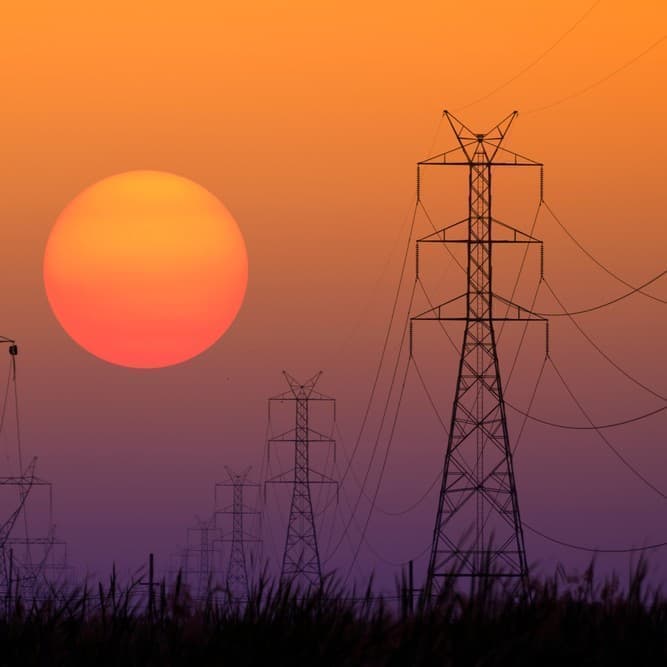Introduction
Imbalance represents a fundamental challenge within Iran’s energy system. This phenomenon refers to the disparity between energy supply and demand across various consumption sectors in the country, influenced by a range of factors (https://civilica.com/note/9667/). Energy imbalance has had significant consequences in the residential, industrial, and administrative sectors, resulting in economic losses. Sanctions against Iran are a key factor contributing to this imbalance. This note examines the impact of these sanctions on electricity generation in Iran. The electricity sector imbalance—recently a hot topic in discussions due to shortages and blackouts—is primarily caused by fuel supply constraints for power plants, aging generation and transmission infrastructure, and barriers to accessing modern technologies. All of these factors are directly or indirectly influenced by sanctions.
Power Plant Fuel Supply
Given that Iran holds the world’s second-largest natural gas reserves and that natural gas is the primary fuel source for electricity generation, combined-cycle, thermal, and gas power plants play the most significant role in supplying Iran’s electricity. In addition to natural gas, petroleum resources contribute to electricity generation as well. By the end of the Iranian year 1402 (March 2024), approximately 85% of Iran’s electricity was supplied by fossil fuels (gas and oil). In contrast, the combined share of renewable energy, hydropower, and nuclear power is smaller than that of fossil fuels (https://ecoiran.com/fa/tiny/news-73534). In 2022, a full 85% of Iran’s total electricity generation came from natural gas. However, following the U.S. withdrawal from the JCPOA and the subsequent tightening of sanctions, the country has increasingly turned to oil for power generation (https://www.eia.gov/international/analysis/country/IRN). Consequently, any energy crisis impacting fossil fuels—particularly natural gas—will adversely affect the country’s electricity supply. Despite Iran’s substantial oil and gas reserves, international sanctions have hindered foreign investment in its petroleum industry. In conjunction with a lack of significant technological advancement, this has resulted in declining production and exports of oil and gas (https://doi.org/10.22059/wsps.2023.363059.1367). Some argue that Iran’s electricity shortages stem from insufficient gas supply— itself a consequence of underinvestment and sanctions. Therefore, lifting oil and gas sector sanctions could help attract investment and ultimately alleviate the crisis (https://www.khabaronline.ir/xmSd5).
Optimizing Infrastructure and Accessing New Technologies
Efficient and optimized infrastructure is essential for ensuring a stable electricity supply. One of the main challenges in Iran’s power industry is the aging of its power plants. The country faces outdated infrastructure, technologically inferior power generation facilities, and obsolete electricity production units. Many of Iran’s power plants require components that are difficult to procure due to sanctions (https://aftabnews.ir/003tji). According to an analysis by a university energy expert, Iran’s electricity demand increases by approximately 7% each year, while aging infrastructure leads to a decline in generation capacity of about 5% annually (https://www.entekhab.ir/003PTZ). International sanctions, as one of the main drivers of this crisis, have severely restricted Iran’s access to global financial resources, advanced technologies, and modern equipment required for its energy sector. Consequently, Iran faces structural challenges in diversifying its renewable energy portfolio and modernizing critical infrastructure (https://carnegieendowment.org/sada/2025/06/irans-energy-dilemma-constraints-repercussions-and-policy-options?lang=en). Among the consequences of these restrictions is the obstruction of renewable energy access and development in Iran—energy sources that could otherwise replace fossil fuels in electricity generation.
Attracting Foreign Investment
Iran’s electricity crisis cannot be solely attributed to increasing consumption. Although the country’s power plants have a nominal capacity of over 90,000 megawatts, actual generation falls short at around 58,000 megawatts. Several factors contribute to the supply-demand gap of more than 10,000 megawatts, including aging power plant equipment, underinvestment in infrastructure, and the government’s substantial debt to private sector. The Iran Electrical Industry Syndicate (IEIS) estimates that bridging this imbalance would require investments of €10 billion. However, current conditions—including domestic capital flight and the persistence of international sanctions—have created significant challenges in attracting foreign financial resources (https://pooyac.com/newsletter/energy-crisis-iran/).
Conclusion
International sanctions have played a pivotal role in exacerbating Iran’s electricity imbalance by restricting access to foreign investment, advanced technologies, and modern equipment. These constraints have not only accelerated infrastructure deterioration and reduced power plant efficiency, but have also hindered energy diversification and renewable energy development. Addressing these challenges requires long-term solutions, including foreign capital mobilization and energy industry modernization—yet the persistence of sanctions continues to pose significant implementation hurdles.
References
- Hasanpour Varkolaei, Mehdi, Iran and the Energy Imbalance Dilemma: Can We Make a Change?“, Civilica, 23 February 2025, https://civilica.com/note/9667/, Last Seen 22 July 2025. (In Persian)
- Eco Iran, An Analysis of Iran’s Electricity Generation Status Compared to Global Standards/ Natural Gas; as the Country’s Primary Power Source, 14 October 2024, https://ecoiran.com/fa/tiny/news-73534, Last Seen 12 June 2025. (In Persian)
- The U.S. Energy Information Administration (EIA), Country Analysis Brief: Iran, October 2025, https://www.eia.gov/international/analysis/country/IRN, Last Seen 12 June 2025.
- Rasoulinezhad, Ehsan & Kirilkina, Inna, “The Effects of Western Sanctions on Iranian and Russian Energy Economics: Evidence from Scenario Planning Method”, Journal of World Sociopolitical Studies, Vol.7, Issue.1, (2023), pp. 1-29, https://doi.org/10.22059/wsps.2023.363059.1367.
- Khabar Online, How Sanctions Fueled Iran’s Electricity Crisis?, 17 November 2024, https://www.khabaronline.ir/xmSd5, Last Seen 12 June 2025. (In Persian)
- Aftab News, Iran’s Power Crisis: Is the Electricity Industry on the Verge of Collapse?, 14 August 2024, https://aftabnews.ir/003tji, Last Seen 21 July 2025. (In Persian)
- Entekhab, Power outages extend into winter / Electricity production in Iran has decreased by 5% due to aging equipment, while demand increases by 7% annually, 28 August 2024, https://www.entekhab.ir/003PTZ, Last Seen 21 July 2025. (In Persian)
- Shokri, Umud, Iran’s Energy Dilemma: Constraints, Repercussions, and Policy Options, 26 June 2025, https://carnegieendowment.org/sada/2025/06/irans-energy-dilemma-constraints-repercussions-and-policy-options?lang=en, Last Seen 19 July 2025.
- Pooyac, Iran’s Energy and Resource Crisis in 2025: Industrial Development at Risk, 16 April 2025, https://pooyac.com/newsletter/energy-crisis-iran/, Last Seen 19 July 2025. (In Persian)





